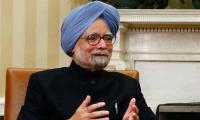In a classic example of double jeopardy, consumers in Pakistan are faced with raging inflation and a virtually nonexistent smart price management system that can ensure access of low-income groups to cost-effective essential commodities to counter the prevailing cost of living crisis.
Traditionally, the discretionary bureaucratic mechanisms in the country manage the prices of essential commodities by balancing supply and demand through extending minimum support price to growers or bringing down retail prices by establishing alternative markets where prices are subsidized through taxpayer money. This is only supply-side management.
Otherwise, the process is ‘traders’ captured’ as they are an organized power, having pressure groups from chambers of commerce up to smaller market committees. Consumers, on the other hand, don’t have many organized associations. Moreover, although existing ‘provincial industrial department-managed’ consumer protection laws provide for consumer councils at the district level, they are either nonfunctional or ineffective.
The UN guidelines on consumer protection ask for enabling consumers to obtain optimum benefit from their economic resources. They should also seek to achieve the goals of satisfactory production and performance standards, adequate distribution methods, fair business practices, informative marketing, and effective protection against practices that could adversely affect the economic interests of consumers and the exercise of choice in the marketplace.
The Principles of Policy (PP) of the constitution (Article 38-A) calls for securing the well-being of the people by raising their standard of living, by preventing the concentration of wealth and means of production and distribution in the hands of a few to the detriment of general interest and by ensuring equitable adjustment of rights between employers and employees.
Numerous provincial laws equip the bureaucracy with discretionary powers to control supply chain and markets – and yet they are ineffective.
In 2019, the Competition Commission of Pakistan (CCP), recommended the upgradation and consolidation of laws under single framework under a single authority, saying that at the provincial level, there are different laws about essential commodities, foodstuffs, agriculture produce markets and godowns registration laws with various departments tasked with enforcement of the same.
However, the CCP’s policy note reviewing provincial laws under the title ‘Amendments in the laws relating to essential commodities to create a level playing field and enhance economic efficiency’ has the wrong premise. Instead of Article 38 (A) of the PP that bars the corporate exploitation of consumers, the CCP quoted half of the 38 (D) out of context which is irrelevant to price management which says that the State shall – (d) provide basic necessities of life…” The CCP report did not quote the other half that says” … such as food, clothing, housing, education, and medical relief, for all such citizens, irrespective of sex, caste, creed or race, as are permanently or temporarily unable to earn their livelihood on account of infirmity, sickness or unemployment;..” Article 38 (D) only deals with providing basic necessities to vulnerable populations.
Ironically, the wrong premise tilted the CCP recommendations in favour of traders as it sought exemption of hyper/supermarkets from the application of price control laws saying that supermarket stores bring in foreign investment and introduce expensive international best practices in the food supply chain, especially in areas such as post-harvesting, maintenance of cold chain processing of foodstuff. Therefore, applying the traditional approach is a disincentive to the big stores, the CCP concluded.
There is no official data on the retail market. Independent researchers estimate the 50 billion dollar retail industry has around one million outlets spread across 500 urban and rural centers of Pakistan. Managing this sector is a daunting task.
This the federal government seems to undertake by reviving a 45-year-old law called the Price Control and Prevention of Profiteering and Hoarding Act, 1977 (PCPPH), through a SRO issued on August 24, 2021. The PCPPH also provides for appointment of Controller General of Prices (CGP) at the national level.
This may replace the post-devolution price monitoring arrangements made in the Ministry of Finance. In 2011, the Economic Coordination Committee (ECC) of the cabinet formed a special National Price Monitoring Committee (NPMC) under the finance secretary to review and monitor the supply situation of essential food items monthly.
The committee was assigned to improve the mechanism to mitigate the price pressures and ensure a smooth supply of essential commodities with representation from the Ministry of Commerce, Ministry of Industries, Ministry of National Food Security & Research, Chief Secretaries, and Secretaries of the concerned departments of provincial governments.
According to official data, between 2011 and 2020, NPMC held 46 meetings. However, in the face of rising inflation last year, it had 31 meetings weekly. Media reports suggest that the NPMC is being shelved without leaving much mark on price management.
Under the PCPPH, the Ministry of Industries and Production has stipulated that the CGP should be using the corporate’s cost-plus method or comparable prices resale price method or profit split and that the CGP will determine prices in consultation with dealers, producers, and importers. Unsurprisingly, no consumer organization is involved in the consultation and the price fixation is not made a continuous periodic process but depends on the concerned officers’ suo-motu discretion.
The essential commodities are grouped into three categories. The first two have 17 items, such as wheat, sugar, vehicles and cars, cement, steel, fertilizer, etc., with an exclusive federal domain. The powers of the CGP are further delegated to the provincial and district government in determining the prices of 33 items, including bricks, vegetables, fruits, and other kitchen items.
The need is to develop a price management structure with active consumer groups’ engagement. The decisions should be based on district-level statistics of demand and supply of essential commodities and future price projections. Otherwise, even though inflation may subside because of some macroeconomics factors, consumers remain vulnerable to commercial exploitation in violation of constitutional principles of policy.
The writer is a freelance contributor.
Email: nadympak@hotmail.com
MPAs ask for their salaries and benefits to be at par with high court judges and exempt from tax
This system fosters and places premium on VIPs, facilitating VIP culture, which is alive and kicking
Imagine this waste covering over 15,500 cricket stadiums, piled three meters deep every year
If there is one thing that can be gleaned from politics today, it is that we no longer speak same language
Postman argues that “typographic mind” was yielding to “televisual mind”
Pakistan is well poised to meet opportunities that Artificial Intelligence will offer for developments in industries







